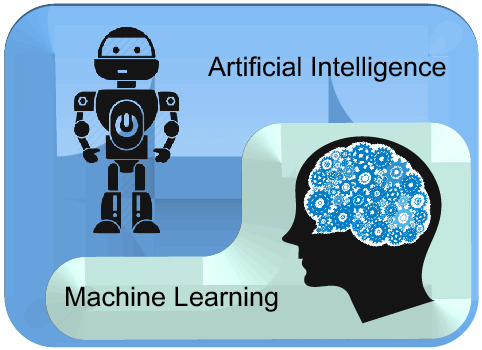Artificial Intelligence (AI) is the study of computer science techniques which can be utilized to make intelligent machines. Machine Learning, on the contrary, is related to a type or method for data analysis that is automated with statistical models that are based on algorithms instead of human-crafted rules like decision trees do where each node represents an experimental experiment with one input number and the corresponding output probability whereas in AI it is possible to have several inputs which could result in different outputs, so you’d have this massive database of data, which could provide more insight into how things work internally.
Artificial intelligence refers to a machine’s ability to solve the tasks typically performed by intelligent human beings or. AI allows machines including robots to perform tasks “smartly” through imitation of human capabilities, such as using data to learn and reasoning using it to make the robot or computer program perform certain functions more effectively than mere mortals can ever imagine and being capable of comprehending instructions without assistance comprehending every word.

Artificial Intelligence: Its Benefits
Artificial Intelligence’s future is now available to you through computers that have human-like abilities. You can communicate with any dialect or language so long as you have data accessible online that demonstrates how to effectively train these programs by giving them ample practice opportunities.
AI is the new technology of the future. It is being utilized everywhere to aid us today, from retail stores and health care to finance departments to detect fraud you name it! This tech is capable of doing almost anything if used in the right way. I’m sure you feel more knowledgeable due to the capabilities of this technology.
Machine Learning Process
Machine learning is a subfield of research that seeks to increase the effectiveness of computers by sharing experiences. This can be accomplished through algorithms that show computers or programs regarding how to behave when given new data. For instance, you might use the data you input to make conclusions about tradeoffs between quality control and cost effectiveness. The computer learns from its mistakes until it draws the right conclusion, without any human intervention.
Artificial intelligence and machine learning can be applied to any technology. Examples include CT scanners, MRI’s and cars navigation systems. One option with this type is utilize it to feed feedback data into your program so that your system can be able to learn the best way to work by seeing how users react or interact under certain conditions. In this way, when we design our algorithms, they’ll be more aware of whether their choices were right from previous input.
Artificial Intelligence is the science of creating machines with human-like abilities to reason and problem-solving. This allows AI-powered smartphones and computers to make sense of data without the need for explicit programming or instructions. Instead, these technology heavily rely on deep learning and machine learning, which will bring us future benefits like powerful computing capabilities that are high-performance.
To learn more, click udacity deep learning review
